Beige, Paris: The best kind of multi-brand shop
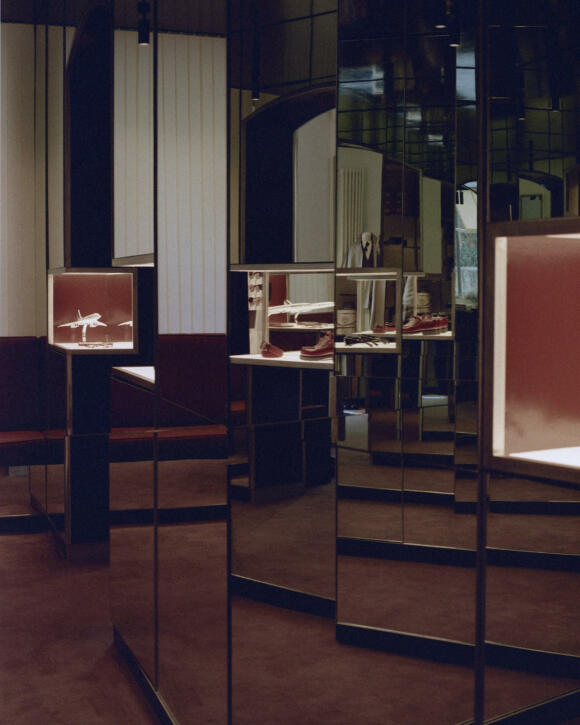
A lot of music fans don’t see the point of covers albums. They want the originals, not a bunch of copies. But I’ve always liked them, whether it’s Johnny Cash’s American IV or Rage Against The Machine’s Renegades, because they’re original and reveal things about the artist.
The songs they decide to cover, the way they sequence them on the album, and how they cover them - how faithfully or originally - says a lot about their influences and why they make the music they do.
Take Kicking Against The Pricks by Nick Cave. The appeal is not just that the Bad Seeds make every song sound more dangerous and ominous - more Bad Seeds - it’s the way it reveals how sincerely Cave loves a crooner, even if it is Tom Jones. And how much they’re all influenced by the dark side of country music.
I mention this because I liked the point, and I never really talk about music. But also because I think it’s one way to think about the value of multi-brand shops, of which Beige in Paris is one of the best.
A multi-brand shop - or select store - should have just as much personality as a brand’s shop. It’s just that the personality comes from the combination of the brands they select, the clothes from the brands, and the way those clothes are put together in original, distinct ways.
We all do this - pick clothes from brands and combine them in ways that we think reflects our style - and a multibrand store is no different. Just bigger and often better.
This is communicated in many ways, but often most effectively in the shop’s imagery. The looks below, from Beige lookbooks in 2019 and 2023, could be from no one else. There is a unique mixing of smart and casual and street, refined yet playful.
And if you like that look, it’s why you’re interested every time somewhere like Beige starts stocking a new brand. It’s why they’ve been so influential in recent years in bringing brands like Doek and Coherence to wider attention.
There’s nothing to stop other shops then stocking them, but their angle would be only one of convenience - the local place to get the cool thing Beige has - and that’s not much of a foundation for a business (particularly given how important e-commerce is to all these shops).
Then there’s the third part of that trifecta - the clothes picked from the brands. If you walk round the new Beige shop in St Germain, it’s not the brands that stick out but they way they all work together. It’s the particular check on a Justo Gimeno teba, and how well that goes with the black Brady tote and black Quoddy deck shoes.
It feels like a brand much more than a department store.
I visited the (relatively new) Beige shop in January, and again in March. This unusual frequency made the experience feel more like that of a local, attracted by a few things on the first visit, then seeing and trying more on the next. Going deeper, understanding more of the style each time and looking forward to what’s next.
I was interested in the Heimat merino thermals the first time, and the Quartz parkas, as neither was a product I’d seen before. The second time it was the sunglasses from Max Pitton and Jacques Marie Marge that caught my eye, and the Quoddy canoe shoes. They were products I already knew, but I started to appreciate Beige’s selection and tweaks to the design (eg the sole and stitching on the Quoddys).
Jacques Marie Marge, by the way, is another of those brands that Beige has been working with for a while but is now everywhere.
A shop itself should also, ideally, be a reflection of a multi-brand operation’s personality, and the new Beige shop feels like it more than their previous location.
The new one is on the corner of a very Parisian mansion block, in the quiet area of Saint Sulpice. This is the rich part of the Left Bank: liberal but moneyed. The book shops are rare book shops; there’s a good smattering of embassies around the pretty Luxembourg Garden.
“People in this area understand the product,” says Basile (below). “Tebas do well here - it’s the kind of customer that might have gone to Arnys in the past perhaps.
“Where we were in the 16th, it was a little different. Someone might complain that a Shetland sweater was scratchy because they didn’t know what it was.”
That experiment in the 16th arrondissement, far outside of the centre of Paris, was an influential experiment, but everyone has now left (Holiday, Le Vif). “The 16th was fun, and a good place to start,” says Basile. “It was originally just a showroom, though we had so many appointments that we ended up opening every day.”
Interestingly, looking back on those early days shows how much Beige has changed - a shop has to evolve with its customers, just like an individual. “Originally the selection was very based around tailoring - Ring Jacket suits, Drake’s ties - and that was quite rebellious in Paris at the time,” says Basile.
“Now we’re more casual, comfy, practical - but there’s always the same approach to the brands.”
A good example is those Quartz parkas, which originated with a chance meeting between Basile and the Montreal-based maker. “We changed a few things to make them more us, and to make them more practical for city wear. We added contrast panels and changed the fill power from 800 to 650, says Basile.” The former was designed to withstand temperatures of -50C, so probably overkill for Paris.
Other brands it’s worth looking at are Rier, whose pieces are quite modern-looking sportswear but made in 100% wool where most are synthetic. And Bunney, an English jewellery maker that is only sold at Beige in France.
Hopefully, I’ll be back in Paris before the end of the year and be able to see how various projects Basile mentioned have come to fruition: new brands, new products, new styles.
This is the pleasure of a multi-brand shop, and as we’ve written before, there are fewer and fewer good ones around.
The Paris Shopping Guide is in the process of being updated, and will be republished in the next week or two.
All the historical Beige Lookbooks are available online, which is nice. See them here.


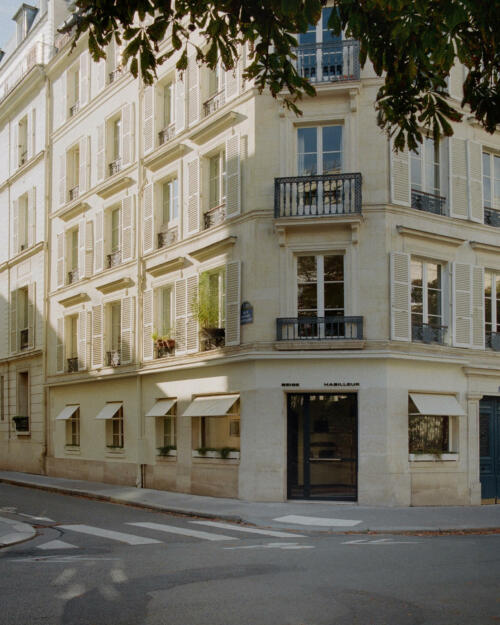
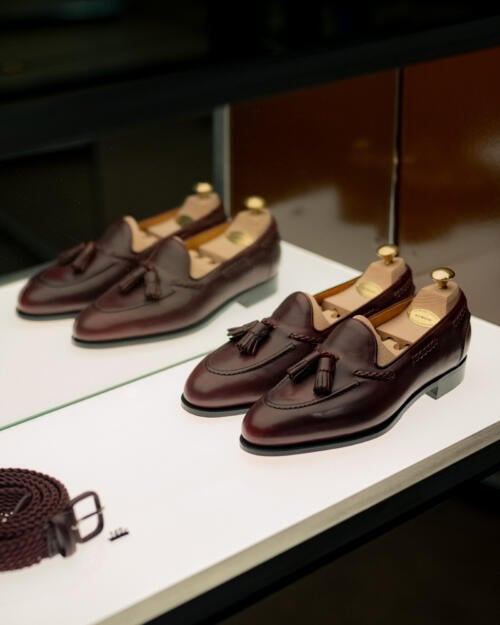

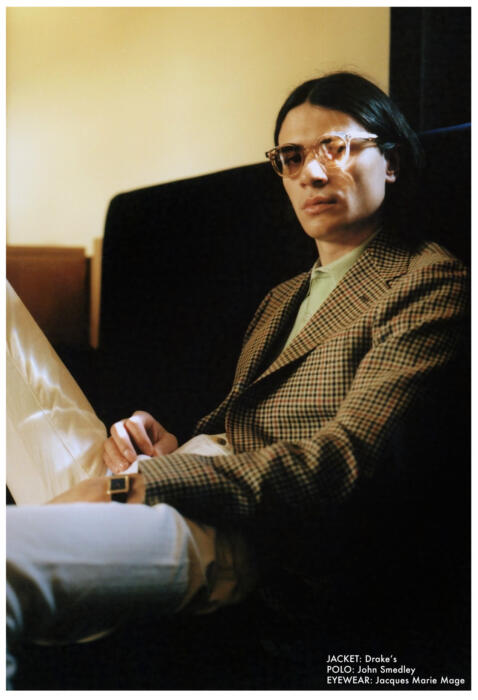
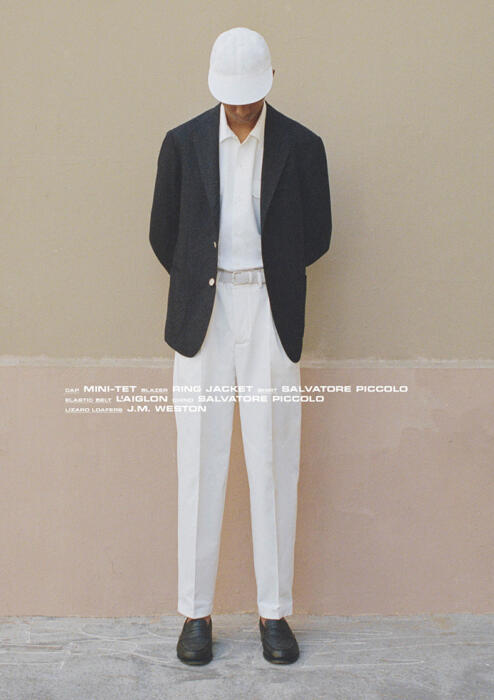
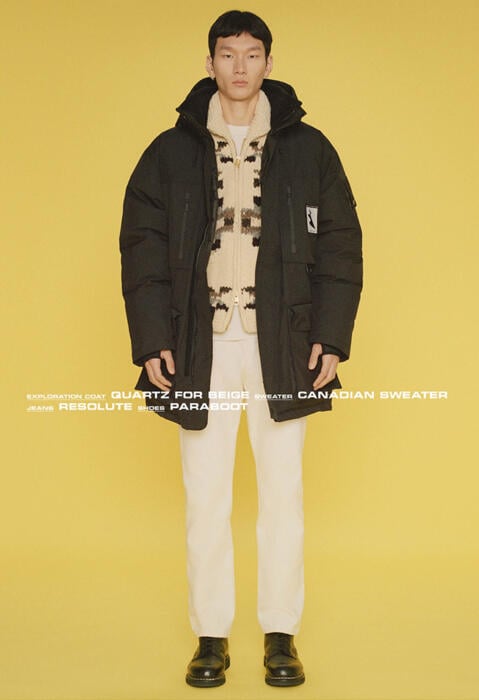
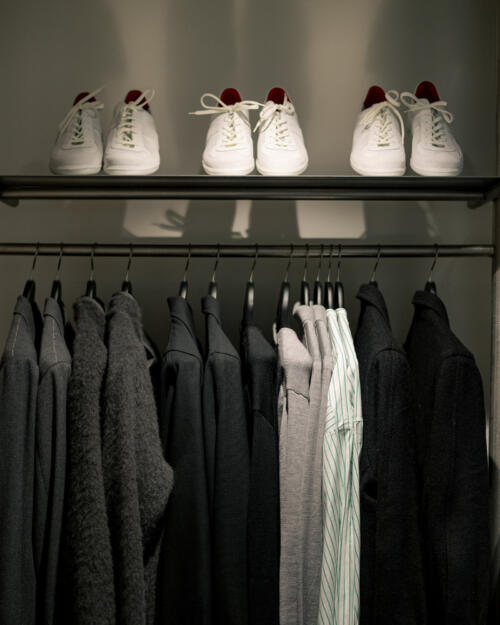
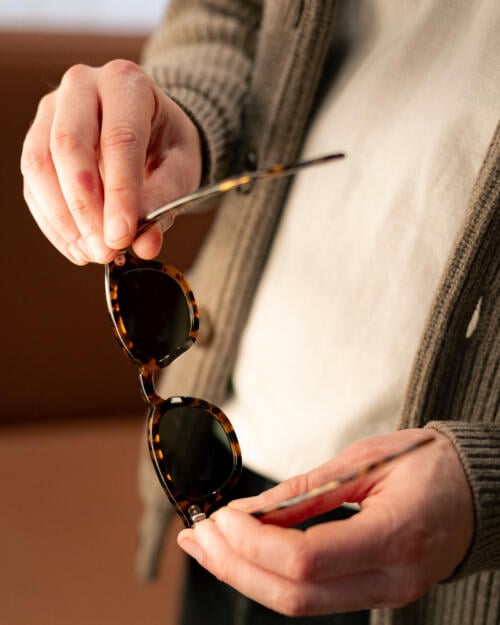
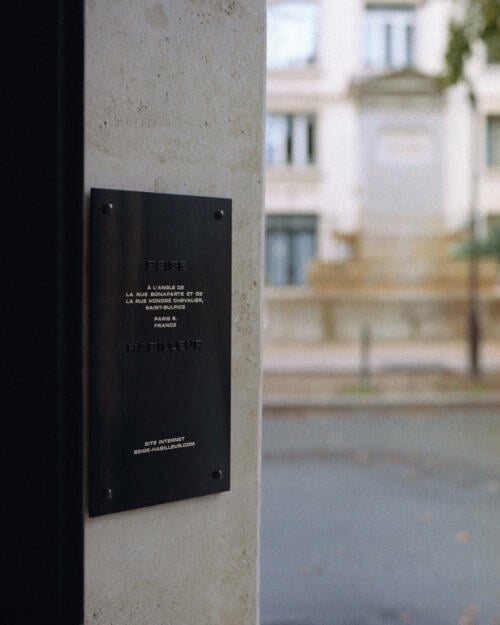
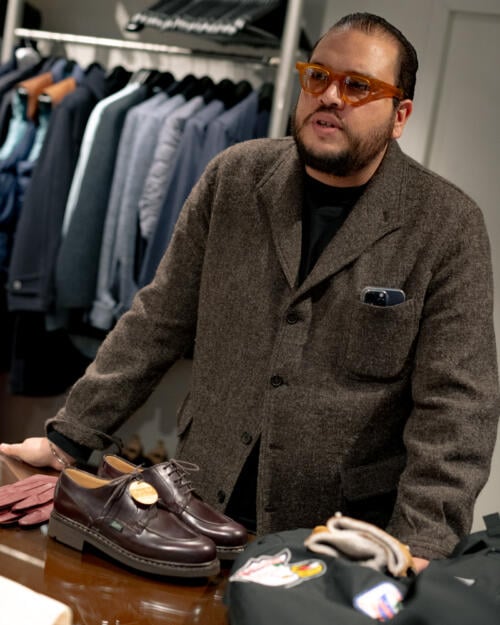
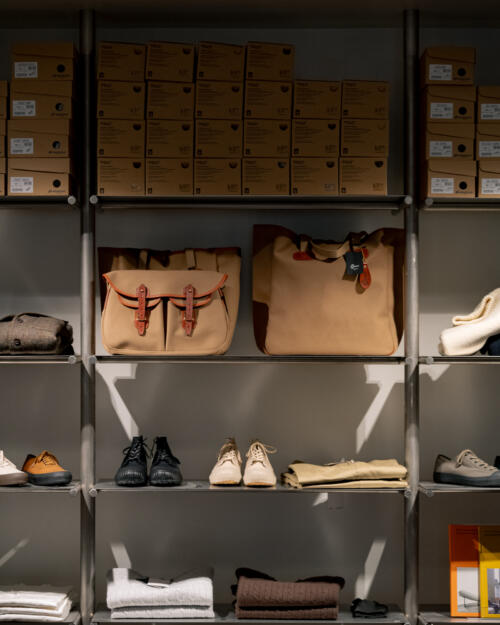
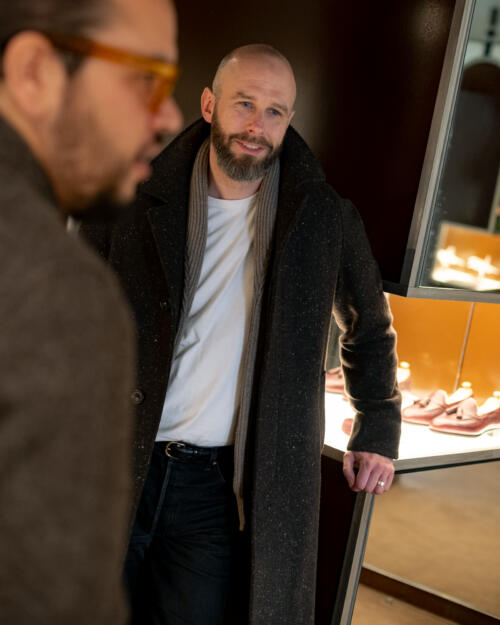
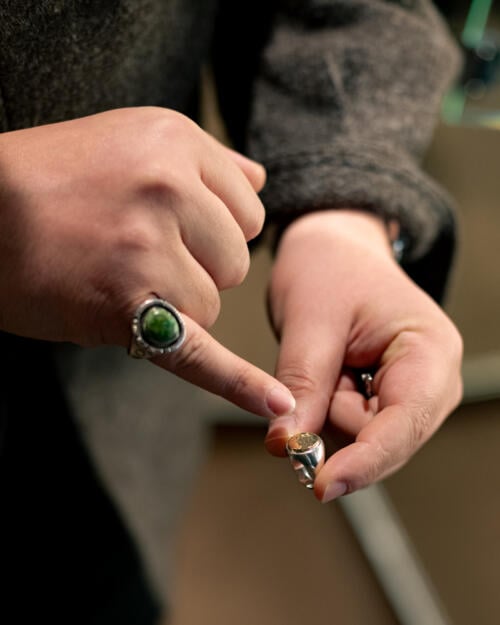
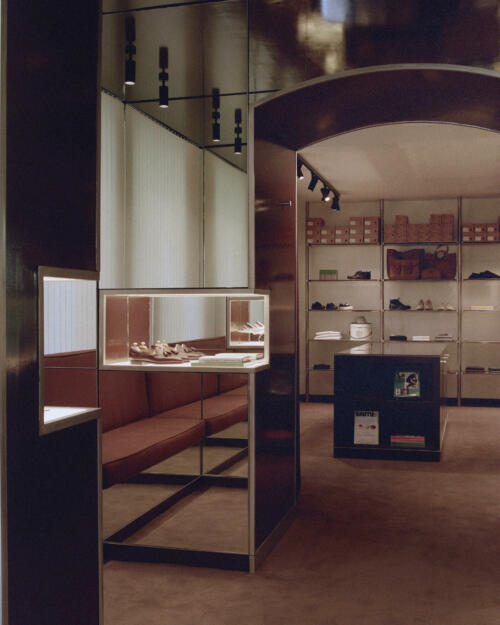


























I actually prefer multibrand stores to brand stores/flagship stores. The staff often knows much more about menswear in general and they are much more honest about quality. I rarely visit brand stores in Stockholm where I live but often shop at good multibrand stores like Gabucci, Lund & Lund or Hans Allde. They are all very well curated.
Multi-brand stores can have a much clearer identity than many flagships. A flagship store is going to push whatever corporate is sending their way, which for larger brands will tend to be a rather diverse mix. Even if you take something like RL, who still has a fairly strong brand identity, it will be high and low. From $6 000 handmade tuxedos to jungle jackets with fake insignias to too-slim, stretchy jeans.
A multi-brand store can focus on pieces that work well together for a uniform look. If a brand you carry makes pieces that don’t fit the overall aesthetic, you don’t stock those.
Looking at the pictures makes me want to visit Beige, but the shoe sizes they stock makes me sad. Les parisiens avoir des petits pieds ?
Anybody here remember Old England on Bvd de Capucines in Paris?
I certainly do!
It sold everything that the stylish Parisien gents wanted to help them look like British aristos. Tweeds, cashmere, Barbour, Goodyear shoes from Northampton, shirts from Jermyn Street, the list goes on.
I think it was unique in Paris at the time. Problems with the lease sounded its death knell in 2012.
That place was the best; English brands through a French eye. I remember seeing it for the first time when I was 16, and just knowing THIS was special.
This kind of looks like a high street Mr Porter ( and I mean that in the most positive of ways ).
It’s a pity we don’t have more of these shops .
Personally , I think these multi brand shops would work well if they were primarily set up to be used by customers to see the garment , try it on for size and then later buy it online.
A sort of showroom (think furniture store that doesn’t actually hold the stock ) .
I think this is the future of retail menswear .
My only problem with shops like Beige is how pretentious and / or intimidating these shops appear . But that’s more a psychological hurdle that I have to clear .
Interestingly, I think the appeal of Mr Porter early on was that it had a clear view on what clothes it liked and the shoots reflected that. Now it just feels like a luxury supermarket, and I haven’t visited for a long time.
The only reason would be if I wanted a particular model and couldn’t find it elsewhere, or for the sales, or because there was a category I was unfamiliar with – say, waterproof shells – and was interested which ones they carried.
Mr. Porter was wonderful in the beginning, and even had some good editorial content. Now it just looks like American GQ, which is sad.
Oki-ni in the early 2000’s had this showroom concept, their USP was all the brands they stocked were designed collaborations with them so you couldn’t buy them anywhere else. I think they were a little ahead of their time as people were not frequent online shoppers as they are today so it didn’t last.
The problem with that model is that if you buy online later from the maker instead of the shop, something that you can probably do for many brands, you are not supporting in any way the running of the showroom, which is done at a great expense (rent, salaries, etc).
Given that you mention furniture, I have an example of that: Ikea opened a big store in the center of Copenhagen, which is a first in the city (the other stores are located outside), and many people is using the store as a showroom and then doing the purchase online. And those sales do not count towards the store’s numbers, meaning the store’s numbers don’t look so great. And it’s not easy for customers to understand that they should close the deal in the store, and then have the goods sent, if they want the store to continue existing.
Last but not least, I agree that these upscale multi brand stores look super pretentious. And many of them actually are (again, my experience here in Copenhagen).
Talked to people at big retailers about a decade ago and even then many of them had a sophisticated understanding of the relationship between their physical stores and online sales, and when evaluating the store they considered the region around, not just the store itself. Very surprising if someone at IKEA isn’t doing that.
I happen to have just visited Beige for the first time on Saturday! I ended up only buying copies of the Casual and the original Style Guide, but I was struck by how much almost everything in the shop looked like you could wear it together. Perhaps that’s the biggest appeal — there’s a Beige look, and if you like what you see in the lookbooks, you can outfit yourself there and you’ll have some of that aesthetic, even if you’re perhaps not the best stylist yourself.
Nice to hear that came across to you in the same way Isaac
Beige has a great choice of Jamieson’s brushed Shetland jumpers, the best choice of colours I have seen in any retailer. It’s a great pity that Jamieson’s are so hard to find in Britain as they are superior to Harley’s.
They have very limited production these days, which is why it is often so lacking. They rarely take on new suppliers
Hey Simon,
Hope all well?
Any idea why Jamiesons are limiting production these days? I know a few UK stockists do them but sizes etc are often unavailable and it would be interesting to know why.
Great great article on a great store by the way! Would love to visit soon.
Many thanks.
Yash
Whenever we see them at Pitti it’s the same story as elsewhere – no people to make the product. Except for them it’s particularly acute because they do almost everything themselves and are remote from most labour forces
Such a shame.
And a long term trend unfortunately…..not sure it can be reversed in any meaningful way. Maybe some pockets of success here and there but long term…..
There are many reasons of course such as demographics, people seeking “better” work in cities etc but I do wonder if a large part of this can be placed at the feet of consumer.
Many are clearly willing and able to pay exorbitant prices for “designer” gear but not willing or don’t know how to search out quality and tradition alongside the new.
There are some companies navigating this traditional history with success – I would argue Barbour is the prime example here – but then the Barbour of today is not the Barbour of yesteryear (though not as far removed from its roots at Burberry now is) and it has still had to outsource production to other nations.
But overall, I can’t think how this long term decline/trend will be halted. Perhaps encouraging and providing the infrastructure for the unemployed to retrain?
Not easy and probably too complex to dissect here.
Many thanks Simon. Enjoy what remains of the long Weekend!
I think it is a question of government encouragement and support, yes. After all, most of these brands have no lack of demand from consumers, even as prices rise.
Barbour just launched adverts for its new glasses collection in the UK. Sits a little strangely
I think there are a couple of crippling (but not un-solvable) problems for craft brands:
I think point 4 and 5 are part of the reason why we see more tailors and shoemakers setting up their own brands, and why more of these businesses are doing everything themselves (or with a couple of apprentices): they enjoy making things, but they also want the autonomy in practicing, and appreciation for master of, their craft.
Sadly, turning this around will likely require both government support, and businesses changing their communication and possibly compensation models. It’s beyond what any one company can fix, if we want manufacturing of any kind to stay alive in the west, the whole system need to pull in the same direction.
Nice points Sam, particularly on the career prospects and on the recognition. I remember the staff at Corgi telling me years ago how much they loved watching fashion shows live, where one or two of their pieces were being used. It connected the most glamorous to the least glamorous parts of the industry
Indeed. I think it’s something we forget, or perhaps don’t want to acknowledge in the industry.
Going back to Pinks “Drive”, the concepts of mastery, autonomy and purpose are very much relevant. Crafts offer a (often clear) path to mastery: there is a clear difference between a well made and a poorly made garment. Autonomy can be given within an organisation – including the craftspeople in the direction and development of the company. But purpose is harder. If you build houses, you can go by and look at the houses you helped build. But for a craftsperson making clothes, you usually ship away your product and won’t ever see the customer wearing it. Even in bespoke tailoring, it’s the cutter and sales rep that interact with the customer, and it doesn’t seem to be given that the tailor actually sees the end result.
I think your interview with Nicoletta Caraceni really shows this – even though she’s clearly deeply passionate about excellence of the craft (to the point where she would rather shut down than see it done poorly), a defining moment to her was when she realised how highly regarded her father and his work was by “movers and shakers”. Perhaps tailors and other smaller craft businesses need spokespeople from mainstream pop culture, not to attract business, but to attract talent. While I am loathe to admit it, it’s probably more motivating to put in the hours to master your craft if you imagine making clothes for rock stars, rather than for slightly neurotic, middle aged men who spend too much of their time arguing about socks on the internet.
Interesting thoughts. Point 5 by the way is basically, I think, what Karl Marx would have called “alienated work”. So this problem is known for quite some time.
Hi Sams,
Interesting and accurate points, well articulated.
Do you think the consumer can play a role in this either in a push or pull capacity – can they be educated to buy better, demand better so that industry and government are pushed to deliver? Would this create enough real world demand? Is that demand even desirable or should appreciation and support of craft based businesses remain niche?
My feeling is the consumer as a whole doesn’t have the power unless legislation and industry practice enable change first that the consumer can recognise and then support.
And education needs to be reevaluated also, particularly given that so much of what we now take for granted in education will no longer provide a secure career path in the future due to rapid technological change and AI. Perhaps more practical and faster to attain craft and traditional qualifications that have some official recognition and are not seen as a time burden or lacking in prestige or respectability?
Thoughts? Simon and others please do feel free to answer also.
I don’t think I know enough to answer that in detail, Yash, but I do still think that buying well and educating others about doing so will still help. For example, even if somewhere like Jamieson’s struggles with capacity, there are other Scottish mills that are good and have gone out of business with lack of demand. And the more factories there are, the more they create training etc and there is more longevity
I guess that’s the best way, continue to support businesses such as those featured on PS, keep speaking to people and spreading passion and knowledge. Thinking about it that’s how I developed a love for clothes very early on with my Aunt taking me to tailors in India and showing me a world of linens and cords etc etc that I had no idea existed.
And I too have managed to influence people I know to dress with more thought and interest just by speaking about what I am wearing etc etc.
Re your last sentence above – it’s the flywheel effect over time.
Thanks Simon.
Exactly.
Thank you!
I think it’s more complicated. Educating is one step, but it’s not the first step.
The first step is making people want to wear a certain type of clothes (or perhaps, clothes made a certain way). How do you do that? You make those clothes cool. I’m sure some people will object to my choice of words here, but if you want a larger market do adopt a style, you got to give it some cachet. I think the “Mad Men” effect illustrates it quite well: young men didn’t start wearing tailoring because they wanted to be “dapper” or “respectable”, or because they wanted to look like their grandfathers. They started wearing it cause Don and Roger were cool.
Once people WANT to wear well-made clothes, educating the consumers makes more sense.
Sadly, there are both financial and market challenges to make this work:
It might be financially viable to make things in the west, if you’re making the highest level of quality. There is a small market that’s willing to pay $600 for a sweater. And selling enough $600 sweaters lets you pay for the higher costs of doing things high-cost countries. But at lower (but still high) price levels, you need volumes to make up the costs. And high volume manufacturing requires more people, which is where the high labor costs in the west becomes a real problem. Making and selling 1 000 $600 sweaters can be profitable, making and selling 2 000 $300 sweaters is harder.
But if you can’t manufacture medium level (good but not great) things in the west, it’s hard to maintain the skilled workforce in the long run. Those knitters, cobblers and tailors who can’t make things to Savile Row standards won’t find much work, which again makes it risky for people to invest in mastering the craft.
The government might help out with this, but they probably won’t. It will annoy too many voters to hear that the government is bailing out companies that make $300 sweaters!
If you go the luxury route and inflate prices enough you can eventually afford to train the next generation yourself (watchmakers seem to be doing this, to some extent). Or you can go the high fashion route and limit the most desirable goods, and make your money on simpler goods: I don’t know how much Hermès makes on every Birkin bag, but I’m guessing most of their revenue is from selling scarves and small leather goods to the people who couldn’t afford a Birkin even if they were offered to buy one.
RL might be the only #menswear guy who has cracked it, having one (or two with RRL) line for cachet and then several more accessible ones. But of course, RL is a brand, they don’t do their own manufacturing, so I don’t know how applicable this is.
I had a look at some of the range online. Just average really – nothing special – no tie in with brand ethos (though not sure how you could tie in glasses with Barbour anyway). Simply looks like they (along with many others) are seeing how far the elasticity of the Barbour name can stretch.
On a separate note I have been searching using the term “Mercer” on any and all pages that search term brings up to try and find an explanation you gave about why even though the Mercer’s were good, there was still a difference between the PS Oxford and Mercer’s in weft or warp or something like that. And just can’t find it again after reading through hundreds of comments.
`So is there a way to search through comments only on any given post that highlights that word on the entire page, enabling one to scroll down and see all the highlighted mentions? This could be useful if it’s possible to implement.
Or do you by chance remember which post that explanation was under?
Thanks.
If you search for ‘Mercer’ it’s in the third article, where we introduce the PS oxford cloth. If you do a ‘find in page’ on your browser you can find the word Mercer. It spells out there that the main difference is Mercer uses a two-ply yarn in both warp and weft, whereas ours has one ply and two ply
Many thanks Simon.
An eclectic, interesting, and beautiful store. I found some unusual things I’d not seen elsewhere.
They are close to L’Etiquette, a cool French magazine which works very nicely with PS to find ideas regarding quality menswear with an edge…
Absolutely, see previous pieces on PS
Man, you had me at Renegades.
Beige is great. Another upside for EU customers is that they are within the EU, so no customs issues. Granted, many UK shops now also offer DDP. But to me it seems that many are charging the costs for the administration / hassle that goes with that in high delivery rates outside the UK.
This is a genuine inquiry as it has always puzzled me and perhaps you don’t know the answer.
Why is it that male models always, or mostly angle their heads to the ground? It irritates me for some reason as it’s very stagey-stagey. And it’s bleeding everywhere
Understand if you don’t respond.
In the case of the one with the cap, I would say it’s because he’s modelling the cap.
More in general, I have a tendency to lift the chin when posing for a photo, and then I hate how it looks. I think the chin slightly down looks way better, at least on my case.
Great article as always, fantastic to have some exposure on something different yet familiar. I think multi brand stores are fantastic. Don’t get me wrong, flagship or 1 brand only stores are fun. I love drakes, the real mccoys, buck mason etc. because of how they succeed in providing a clear physical space that displaces their identity and it’s always a pleasure being able to try on various pieces. However the draw back is that it can get boring. You walk in and you already know what your going to find, if your familiar. The reason why I find multi brand stores so interesting such as clutch, the armoury arguably. Is how they surprise you, you never know what you’ll find and this really feels like it’s a step up because the products are selected as it their an extension of a brand and not just on display.
Great as always.
I visited Beige 2 months ago for the first time. I was surprised by how knowledgeable Basile is in terms of styling and history of brands. Beige is a menswear store one should visit in Paris for sure! and kids can go to Luxumbourg Garden too:)
Simon, this is totally off topic, but I had a fleeting thought. Is it possible to have one’s awareness and sensibilities too refined? I was getting dressed to meet a friend for lunch at what we call a dive bar. The lack of pretension or even surface gentility is palpable in these establishments, and is part of the appeal, along with waitresses who are not the type of girl we would ever have been allowed to date in our youth. Despite the fact that my friend generally looks as if he got dressed from a charity shop, as I was putting on my entirely utilitarian shoes, I noted that they clashed with my socks. (I remember one of your pieces touting the virtues of taupe socks, which I have taken to heart.) At this point, I caught myself, and had my moment of reflection. I did not change my socks or shoes, but mentally noted the error so as not to repeat it.
I think certainly one can dress inappropriately for a place, but I think that’s something different to what you’re asking.
I think you can care too much, which is probably closer. That’s something we all battle with, because we care, but also don’t want to be fussy about things, or judgmental of others.
Really enjoyed reading this and will be on my to visit list next time I’m in Paris. The lookbooks are just so sublime too.
I was exactly thinking that what you described in your intro was the exact feeling one had upon entering the old Arnys shop and seeing the small objects curated by the owners (the knives !) perfectly harmonious with the rest of the shop, when I read Basile remark on their Saint Sulpice’s client base. Excellent reference point!
Thanks Ramon, and yes very good point.
I still have one of those Arnys knives – you can get them elsewhere of course, but it felt symbolic that that was what they carried, and nothing else similar
What do you think of Cave’s tailor, Chris Kerr?
I don’t know much about him I’m afraid. Certainly no personal experience